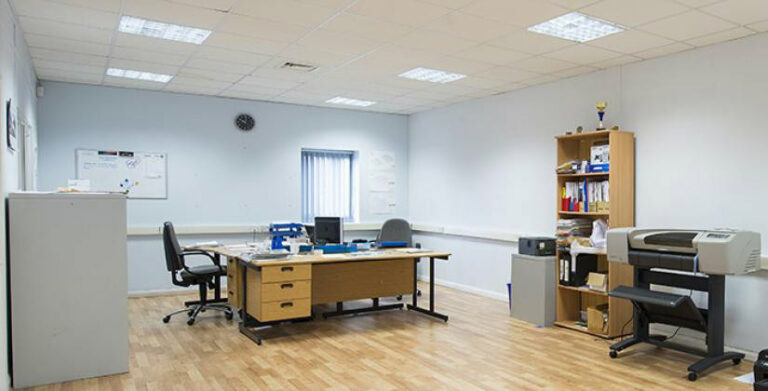Shrinking attention spans and your business
According to the statistics, attention spans are shrinking. So how can you combat this in your marketing and how you manage your staff?
Have you ever found yourself distracted from a conversation by a barrage of notifications on your phone? Or should that question be how often rather than have you ever? Maybe you’re the person who feels like you’re talking to a brick wall while your colleague ‘listens’ to you while texting someone else?

Technology and multi-tasking
It’s no wonder that the average attention span has reportedly reduced from around 12 seconds in 2000 to 8 seconds in 2013. Today’s technology means we receive a flood of information from various sources. You can instantly go online and find answers to the most obscure questions. You no longer have to remember your family’s phone numbers or birthdays as they’re saved electronically and synced across your devices. And you can keep in touch with friends and colleagues at all hours of the day or night via email, social media, video messaging (or more traditionally by making a phone call).
We’re often doing at least two things at once. A study by Nielsen company found that around 40% of tablet and smartphone owners use their devices while watching TV each day. Most use them to surf the web, look up general information or to visit social networking sites, while a only a small percentage post or look up something related to what they’re watching.
What does this mean for my business?
If you own a business, you’re no longer just competing with similar businesses for your customers’ attention, but with a whole host of other products, providers and organisations.
Or are you? People can be focused in certain situations or when something really interests them. Certainly our attention spans online are short, but they always have been. Web editors have known for years that they have less than 10 seconds to grab a visitor’s attention. Perhaps what’s changed is that there is more competition and that advertising is now done online, so therefore your marketing efforts need to be focused and targeted online?
How to get (and keep) your customer’s attention
So what can you do to stand out and make sure you catch – and keep – the attention of your customers?
1. Keep online information short and snappy
- Check the speed of your website – if it’s too slow, visitors will click away before it’s even loaded.
- With more potential customers using their mobiles and tablets, make sure your website is optimised for mobile viewing.
- Write in a pyramid style – with a summary at the beginning and the key information at the top. Use action words and verbs in your content.
- Use bullet points and headers to split your information into manageable chunks.
- Use videos and graphics where appropriate – i.e. where it appropriately conveys the point you’re trying to make. Infographics have become hugely popular because they’re bite-sized pieces of information that you can skim, with limited text to support bold graphics.
2. Customise your content
Your aim is to reach your audience at the right time and with content that’s relevant for them.
- Segment your email database, and tailor campaigns to your customers’ preferences.
- If appropriate to your business, webinars can be a successful way of engaging with your audience and keeping their attention. The key factor is that it needs to be interesting and of value to them, e.g. educational.
- Make your content ‘snackable’. Platforms like Twitter and Snapchat are great for this, because they’re pieces of micro content that can be quickly read or absorbed.
- Change your content based on your audience base. If you’re promoting your business on LinkedIn, you’ll probably want to be a little more formal than you would on Facebook for example.
3. Provoke an emotion
- Often the best adverts are the ones that promote some sort of emotion, such as laughter or surprise. For example, a good image of your product might capture their attention and make them really want or feel that they need that product.
- Think carefully about the use of colour and visuals. Have you noticed how a lot of the posters for action films use similar colours? They often have a lot of red and black in them and this isn’t a coincidence. Black signifies authority and power and red grabs our attention and represents danger and excitement. If you’re targeting women rather than men, you might want to use softer colours – see a useful infographic on the subject of colour and gender.
How to increase attention at work
While you may be concerned about getting your customers’ attention, you should also make sure you and your team are working as productively as possible and not getting distracted.
1. Break up tasks
- Lists are great for working out what you need to do and for prioritising what should be done first. Plus, ticking items off your list can give you a feeling of achievement, which is great for productivity.
- Schedule your time. Some people swear that breaking up their day, for example into 90 minute chunks, helps them to focus and dramatically increases their productivity. The allocated time gives you long enough to get a piece of work done, but not so long that you lose focus on the task at hand.
- Work out when you’re most productive. This will vary from person to person. Some people work best in the morning, while others will find they’re more alert in the afternoons or late morning. Save your most important work for these times, when you’re likely to be more focused.
- Give yourself and your staff both short and long term concrete goals to work towards.
2. Make your meetings valuable
- It goes without saying that you shouldn’t arrange meetings for the sake of it and that they should only last as long as they need to.
- Make sure you have a clear agenda and that everyone has it in advance of the meeting.
- Summarise and confirm the actions agreed at the end of each agenda item.
- Make your meeting interactive and engaging
- If you have a long agenda, keep the topics moving or have short breaks in between to help people come back refreshed and focused
- Make it a rule that staff can’t check their emails or answer the phone while in the meeting (another reason you may need a break or two). This can help to stop attention wandering off.
3. Stop multi-tasking
- Did you know that office workers check their email inbox an average of 30 times an hour? That’s incredibly distracting – particularly if you get emails that you feel you need to respond to immediately. Turn off the notifications – whether you’re using a desktop pc, a tablet or your phone. Check your email at certain times of the day, instead.
- If you can’t help be distracted by your Twitter feed or other apps, put your phone away or close down your browser window if you can, to take away the temptation of looking.
- Listening to music can sometimes help to focus your mind and minimise disruptive background noises, such as loud colleagues. Music without lyrics tends to work better but this will vary depending on each individual’s preferences.
Author:
BizSpace
BizSpace is the UK’s leading provider of regional flexible workspace. For over 20 years we have been offering office, studio and workshop units to a wide range of businesses in convenient regional locations across the country. We are owned by Sirius Real Estate, a commercial property operator, that is supporting us on a journey to significant growth.
More BizSpace News

Blog
Finding a Small Industrial Unit or Workshop to Rent
Let’s be honest with each other, finding a ‘perfectly sized’ industrial unit for your business isn’t exactly fun. It’s time-consuming,…
Find out more
Blog
Designing your ideal office: 8 top tips
Focus on comfort and practicality when designing your office space, considering layout, light, furniture, clutter and accessories.
Find out more
Blog
What is a Satellite Office?
Businesses are now finally able to return to some sense of normality in our post-COVID society. There has been plenty…
Find out more